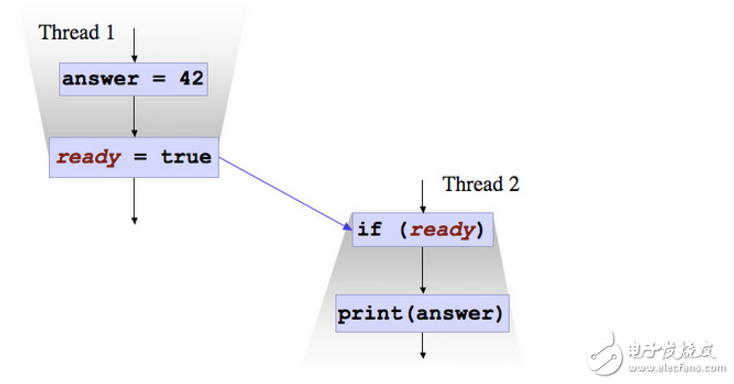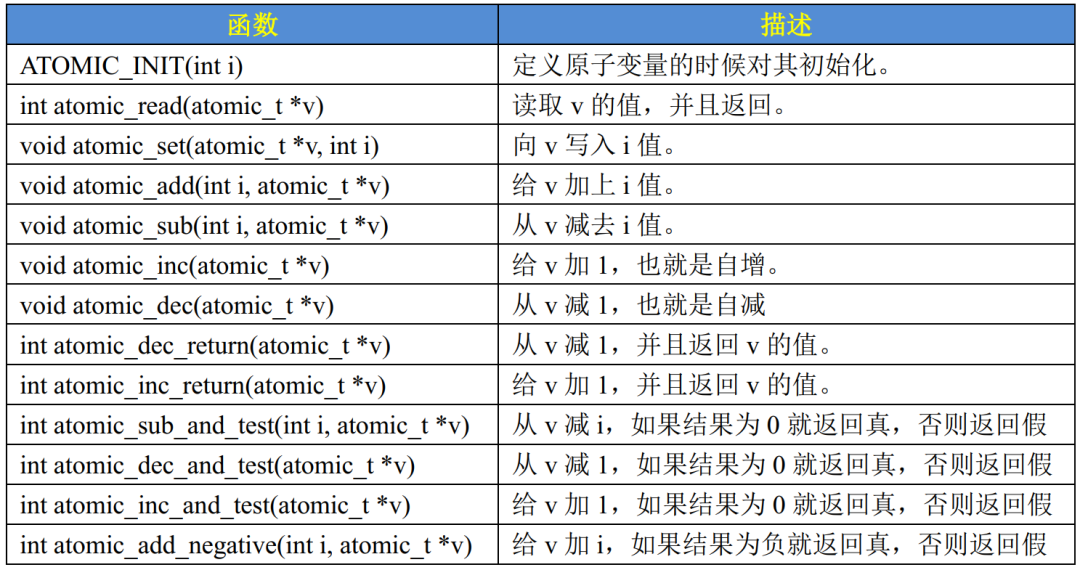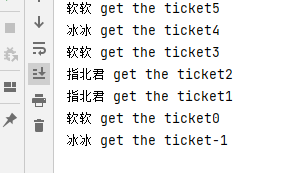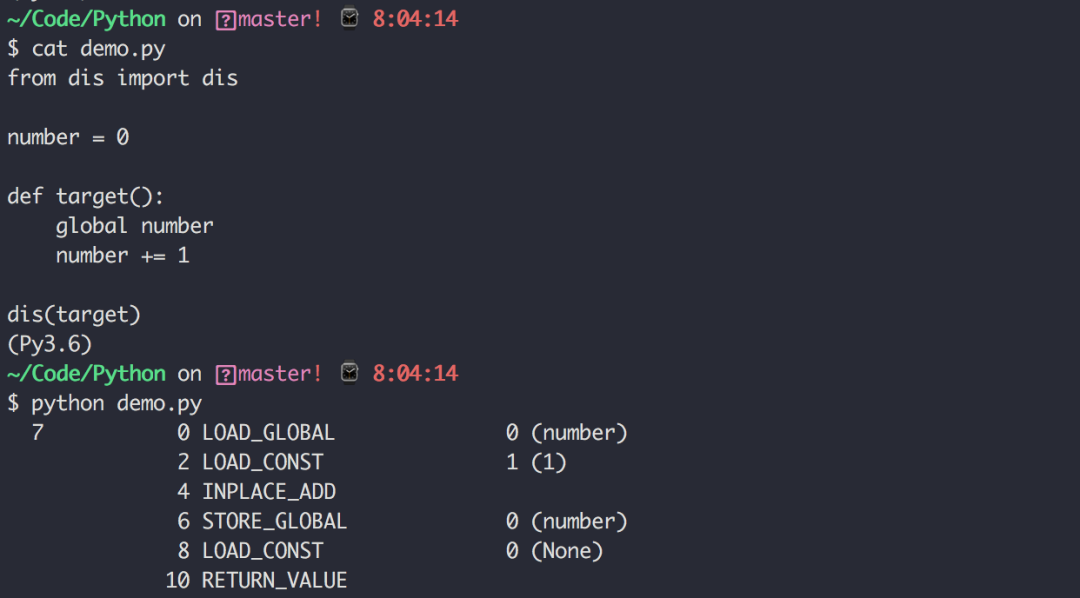一般說來,volatile用在如下的幾個地方:
1、中斷服務程序中修改的供其它程序檢測的變量需要加volatile;
2、多任務環境下各任務間共享的標志應該加volatile;
3、存儲器映射的硬件寄存器通常也要加volatile說明,因為每次對它的讀寫都可能有不同意義;
另外,以上這幾種情況經常還要同時考慮數據的完整性(相互關聯的幾個標志讀了一半被打斷了重寫),在1中可以通過關中斷來實現,2 中可以禁止任務調度,3中則只能依靠硬件的良好設計了。
volatile關鍵字保證了
1. 可見性——在多線程環境下,被修飾的變量在別修改后會馬上同步到主存,這樣該線程對這個變量的修改就是對所有其他線程可見的,其他線程能夠馬上讀到這個修改后值。
2. 禁止指令重排序優化
本文中來談談第一點,可見性。
Thread的本地內存
每個Thread都擁有自己的線程存儲空間
Thread何時同步本地存儲空間的數據到主存是不確定的
例子

上圖表示兩個線程并發執行,而且代碼順序上為Thread1-》Thread2
不用 volatile
假如ready字段不使用volatile,那么Thread 1對ready做出的修改對于Thread2來說未必是可見的,是否可見是不確定的。假如此時thread1 ready泄露了(leak through)了,那么Thread 2可以看見ready為true,但是有可能answer的改變并沒有泄露,則thread2有可能會輸出 0 (answer=42對thread2并不可見)
使用 volatile
使用volatile以后,做了如下事情
每次修改volatile變量都會同步到主存中
每次讀取volatile變量的值都強制從主存讀取最新的值(強制JVM不可優化volatile變量,如JVM優化后變量讀取會使用cpu緩存而不從主存中讀取)
線程 A 中寫入 volatile 變量之前可見的變量, 在線程 B 中讀取該 volatile 變量以后, 線程 B 對其他在 A 中的可見變量也可見。 換句話說, 寫 volatile 類似于退出同步塊, 而讀取 volatile 類似于進入同步塊
所以如果使用了volatile,那么Thread2讀取到的值為read=》true,answer=》42,當然使用volatile的同時也會增加性能開銷
注意
volatile并不能保證非源自性操作的多線程安全問題得到解決,volatile解決的是多線程間共享變量的可見性問題,而例如多線程的i++,++i,依然還是會存在多線程問題,它是無法解決了。如下:使用一個線程i++,另一個i–,最終得到的結果不為0
private static volatile int count = 0;
private static final int times = Integer.MAX_VALUE;
public static void main(String[] args) {
long curTime = System.nanoTime();
Thread decThread = new DecThread();
decThread.start();
// 使用run()來運行結果為0,原因是單線程執行不會有線程安全問題
// new DecThread().run();
System.out.println(“Start thread: ” + Thread.currentThread() + “ i++”);
for (int i = 0; i 《 times; i++) {
count++;
}
System.out.println(“End thread: ” + Thread.currentThread() + “ i--”);
// 等待decThread結束
while (decThread.isAlive());
long duration = System.nanoTime() - curTime;
System.out.println(“Result: ” + count);
System.out.format(“Duration: %.2fs\n”, duration / 1.0e9);
}
private static class DecThread extends Thread {
@Override
public void run() {
System.out.println(“Start thread: ” + Thread.currentThread() + “ i--”);
for (int i = 0; i 《 times; i++) {
count--;
}
System.out.println(“End thread: ” + Thread.currentThread() + “ i--”);
}
}
}12345678910111213141516171819202122232425262728293031323334353637383940414243
最后輸出的結果是
Start thread: Thread[main,5,main] i++
Start thread: Thread[Thread-0,5,main] i--
End thread: Thread[main,5,main] i--
End thread: Thread[Thread-0,5,main] i--
Result: -460370604
Duration: 67.37s123456
原因是i++和++i并非原子操作,我們若查看字節碼,會發現
void f1() { i++; }1
的字節碼如下
void f1();
Code:
0: aload_0
1: dup
2: getfield #2; //Field i:I
5: iconst_1
6: iadd
7: putfield #2; //Field i:I
10: return123456789
可見i++執行了多部操作, 從變量i中讀取讀取i的值 -》 值+1 -》 將+1后的值寫回i中,這樣在多線程的時候執行情況就類似如下了
Thread1 Thread2
r1 = i; r3 = i;
r2 = r1 + 1; r4 = r3 + 1;
i = r2; i = r4;1234
這樣會造成的問題就是 r1, r3讀到的值都是 0, 最后兩個線程都將 1 寫入 i, 最后 i 等于 1, 但是卻進行了兩次自增操作
可知加了volatile和沒加volatile都無法解決非原子操作的線程同步問題
線程同步問題的解決
Java提供了java.util.concurrent.atomic 包來提供線程安全的基本類型包裝類,例子如下
package com.qunar.atomicinteger;
import java.util.concurrent.atomic.AtomicInteger;
/**
* @author zhenwei.liu created on 2013 13-9-2 下午10:18
* @version $Id$
*/
public class SafeTest {
private static AtomicInteger count = new AtomicInteger(0);
private static final int times = Integer.MAX_VALUE;
public static void main(String[] args) {
long curTime = System.nanoTime();
Thread decThread = new DecThread();
decThread.start();
// 使用run()來運行結果為0,原因是單線程執行不會有線程安全問題
// new DecThread().run();
System.out.println(“Start thread: ” + Thread.currentThread() + “ i++”);
for (int i = 0; i 《 times; i++) {
count.incrementAndGet();
}
// 等待decThread結束
while (decThread.isAlive());
long duration = System.nanoTime() - curTime;
System.out.println(“Result: ” + count);
System.out.format(“Duration: %.2f\n”, duration / 1.0e9);
}
private static class DecThread extends Thread {
@Override
public void run() {
System.out.println(“Start thread: ” + Thread.currentThread() + “ i--”);
for (int i = 0; i 《 times; i++) {
count.decrementAndGet();
}
System.out.println(“End thread: ” + Thread.currentThread() + “ i--”);
}
}
}12345678910111213141516171819202122232425262728293031323334353637383940414243444546474849
輸出
Start thread: Thread[main,5,main] i++
Start thread: Thread[Thread-0,5,main] i--
End thread: Thread[Thread-0,5,main] i--
Result: 0
Duration: 105.15
 電子發燒友App
電子發燒友App



























評論